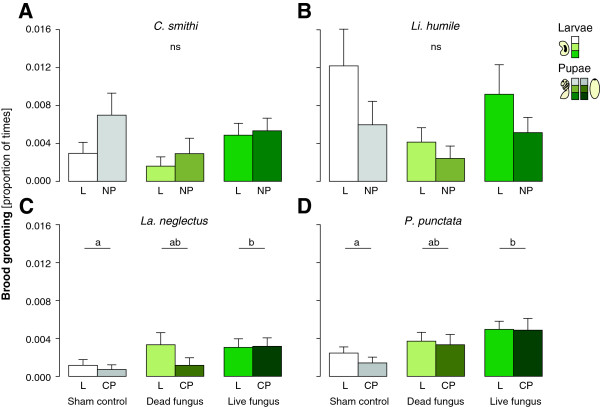Figure 1.
Brood grooming in ants with naked vs cocooned pupae. Grooming frequency (proportion of times grooming was performed on total observations) received by the brood (L: larvae, NP: naked pupae, CP: cocooned pupae) treated with either sham control (white to grey bars), dead fungus (light green tones) or live fungus (dark green tones) is shown for the two species with naked pupae, C. smithi(A) and Li. humile(B), and the two species with cocooned pupae, La. neglectus(C) and P. punctata(D). Larvae and pupae received equal grooming in all species. Only the two species with cocooned pupae (C,D), but not the ones with naked pupae (A,B), groomed live fungus-exposed brood more frequently than the sham control, with dead fungus-treated brood being groomed at intermediate rates. Mean + s.e.m. are depicted, different letters denote statistical differences at the significance level α = 0.05 (ns: not significant).

